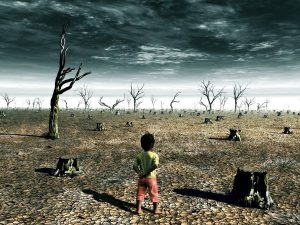Water Conservation
Acid Rain is Still a Major Problem Across the Globe
Decades ago, acid rain became one of the rallying points for those concerned about the environment. While other issues such as global warming have taken center stage in recent years, the problem still persists although some gains have been made.
The phrase “acid rain” was coined in the 19th century by Robert Angus Smith, but the problem became a widespread issue in the United States in the 1960s when scientists began studying the effects of pollutants ejected into the atmosphere on the environment. The issue was pushed into the limelight in the 1970s by the New York Times, which reported on the effects of acid rain in the Hubbard Brook Experimental Forest in New Hampshire.
By 1980, Congress had passed the Acid Deposition Act, and subsequent legislation (including amendments to the Clean Air Act) sought to control emissions of corrosive sulfur dioxide and nitrogen oxides into the air. Recent studies show some of the areas most impacted by acid rain – New York, Vermont, New Hampshire and Maine – are still enduring the effects, but there are early signs of recovery, according to sciencemag.org.
 Generally speaking, acid rain is any type of precipitation – rain, snow, fog – that contains a high level of nitric or sulfuric acids. Some of this can be caused by natural phenomenon such as volcanic eruptions and even gases emitted by large amounts of rotting vegetation. However, most acid rain comes from human activities, according to National Geographic.
Generally speaking, acid rain is any type of precipitation – rain, snow, fog – that contains a high level of nitric or sulfuric acids. Some of this can be caused by natural phenomenon such as volcanic eruptions and even gases emitted by large amounts of rotting vegetation. However, most acid rain comes from human activities, according to National Geographic.
The primary cause is the burning of fossil fuels. This process releases sulfur dioxide and nitrogen oxides into the atmosphere. When these chemical interact with water and oxygen, the reaction forms a solution of sulfuric and nitric acids that falls back to Earth.
These chemicals then move over the planet’s surface along with rain water, sometimes flowing into water systems and also seeping into the soil.
And while the term acid rain is best known, about half of these chemicals come back to Earth as “dry deposition” via dust or smoke, according to the Environmental Protection Agency (EPA). In this form, the chemicals stick to places such as buildings, cars and homes, and eventually get washed off by falling rain, which turns it more acidic.
The most damaging effect of acid rain is typically the contamination of bodies of water – lakes, rivers, streams and wetland areas, according to National Geographic. Acidic waters absorb the aluminum that runs into waterways from the soil, turning the water toxic for many aquatic animals, including crayfish, clams and fish.
This then affects the food chain – non-aquatic animals, such as certain species of birds, are affected by the lack of food in the waterways. In extreme cases, acid rain can lead to “dead lakes,” where most living orgasms no longer thrive.
Vegetation also can be harmed, with acid rain suffusing the soil with aluminum, making it more difficult for plants to absorb needed nutrients.
There are other, perhaps lesser known, affects, according to the EPA.
For example, reports through the years have shown examples of acid rain corroding paint on automobiles, leaving patterns that are irregularly shaped and permanent. It’s easier to see on darker cars or under fluorescent lamps.
Humans are not harmed directly by acid rain, but the indirect damage can be substantial. The pollutants within acid rain can interact with atmospheric gases to create small flakes of particulate that can be inhaled deep into the lungs.
Many studies over the years have shown a correlation between these particles and increased likelihood of illnesses and premature death from lung and heart issues, according to the EPA.
Stated simply: the fewer chemicals ejected into the air through the burning of fossil fuels, the less chance of acid rain or dry deposition.
Since the burning of fossil fuels continues, the EPA has several suggestions. They include regular cleaning of smokestacks used in operations that burn coal, natural gas and oil, which involves the installation of scrubbers in smokestacks.
Another method is the ongoing effort by both private industry and many governments to find viable alternative energy sources – wind, solar, geothermal and hydro, for example.
The EPA also notes that there are ongoing projects to restore areas damaged by acid rain.
Individuals can also help by using the same steps that are recommended for using less energy in your home – less energy consumed, fewer fossil fuels burned. Example include turning off lights, computers and appliances when they are not being used, installing more energy-efficient appliances, using heating and air conditioning less, insulating your home and carpooling.
While the effects of acid rain are still present, the hope is these steps will help reduce the problem and that efforts to restore areas harmed by acid rain will continue to see success.